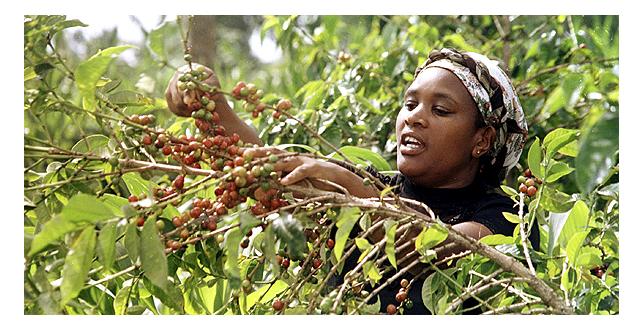From
Farm to Polystyrene Cup
As we came to the end of our first class ‘94-810 –
Introduction to Supply Chain’, I began to think of some supply chains, or
networks that are closer home. Kenya is one of the world's top ten coffee producers producing over 150,000,000 pounds of coffee in 2012. I grew up on a farm in Ruiru, Kenya, 40 minutes
away from Nairobi, the capital city. My father is, among other things (like
being a superb dad), a coffee farmer. As I grew up, we would drive through
kilometers of coffee on our daily commute to school. As a young girl, on
Saturday mornings I would follow my mom to the factory and play among the
coffee drying racks, rolling around in reckless abandon.
with
Mom circa 1993
At the time, I was in no position to begin to comprehend
that the coffee beans I clutched in my fists may end up in a polystyrene cup of
a stressed out New Yorker. As I left class, I began to think about the complex
supply chain that enables businesses like Starbucks or Nestle get their
coffee from farms in Ruiru, Kenya or Veraguas, Panama to their global outlets.
The network through which coffee is grown and marketed in Kenya is a complex one. Farmers typically invest significant money and effort in order to tend to healthy and fruitful coffee trees. In Kenya, Arabica is the most common tree, and takes three to five years for the plant to begin to bear fruit. It is then harvested, washed and sorted primarily by hand.
For marketing, the Nairobi Coffee Exchange runs once a week. An auction is conducted and the cooperatives and large sellers sell their produce to highest bidders, typically agents. These agents then sell their produce to large corporations such as Starbucks and Nestle. Towards the early 2000s, a second window has emerged where licensed growers are able to negotiate and sell directly to buyers outside the country. A company like Starbucks would then use the premium AA grade coffee obtained from Kenya to blend with less quality coffee from around the world, for cost optimization. It then distributes these out to its nationwide outlets for sale within stores as well as for retail distribution.
It is therefore interesting then to walk to Starbucks, Craig Street twenty years later and find them serving 'Kenya Coffee' - makes me think my little cousin may have rolled around in the coffee that I am drinking!
References:
http://www.coffeeboardkenya.co.ke
http://www.businessdailyafrica.com/Opinion+and+Analysis/Policy+failures+inadequate+capacity+hurting+coffee+industry+/-/539548/1903630/-/4xd3v4z/-/index.html
http://www.coffeereview.com/reference.cfm?ID=67





No comments:
Post a Comment
Note: Only a member of this blog may post a comment.